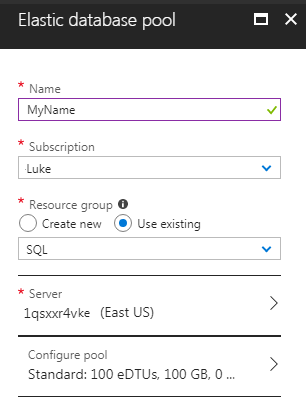You can perform the steps of Conversion of SQL Server Databases to Elastics pools (without changing your existing connection strings).
Requirements for this:
First of all, make sure that, the Database is on the same SQL Server.
For instance, if you have multiple databases in your single server, then you can easily convert them into a single elastic pool.
If that is not the case, then simply create an SQL Server with Elastic Pool and transfer the databases into it, you'd require to make changes to the connection strings in your application which uses those databases.
So, for that, follow the steps below:
Now first, creating a New SQL Elastic Pool.
Search for SQL Elastic Pools Service in the All Services , then enter "elastic pool and click on "SQL elastic pools".


Provide the name and select the subscription type, resource group, and your existing SQL Server:

Now Configure your elastic pool by clicking on Configure Pool.
 From the Resource Configuration & Pricing panel:
From the Resource Configuration & Pricing panel:
- Select the tier across the top: Basic, Standard, Premium, or vCore for even more options
- Under Pool Settings, you can set the Maximum DTUs and Data Size
- The pricing for your selections appears in the Cost Summary box on the right
Now, add your Databases to the elastic pool > Click on "Databases" tab in order to add the databases to your Elastic Pool:

Set the Per Database Settings > Third tab you can see here is "Per database settings", with this, you need to specify the minimum and max DTU, so as to allow for each DB:
 Finish
Finish
When it is done, press "Apply", it will save the configuration, then click on "Create", it will create the Elastic Pool.
It may take sometime, but after it is done, your DB will share the elastic pool.
